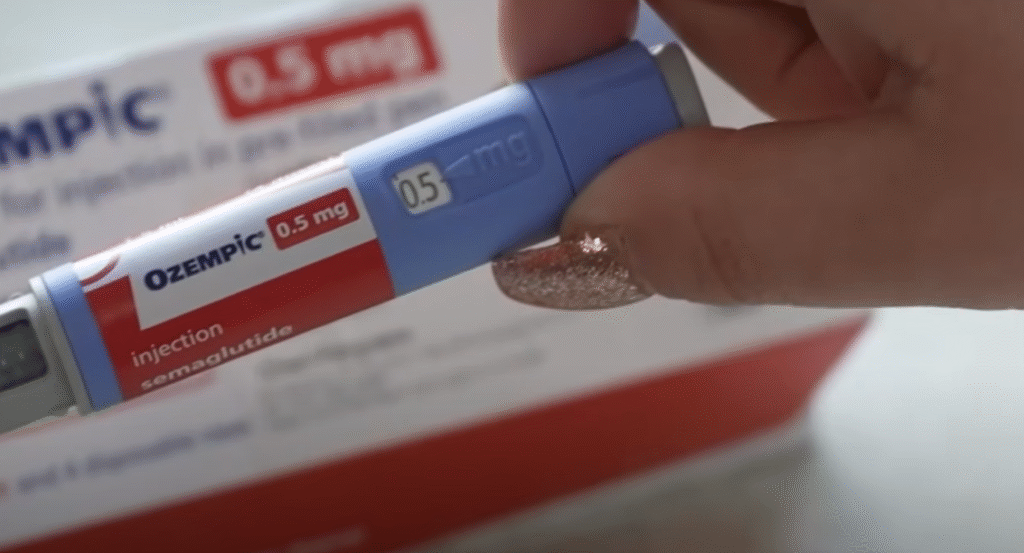Ozempic has been called a cultural obsession as well as a medical revolution. It revolutionized the treatment of diabetes and, surprisingly, the weight-loss sector. However, it is currently the subject of thousands of lawsuits, remarkably similar to other medications that gained popularity before their adverse effects were completely recognized. A product that was once touted as a very successful way to lower weight and control blood sugar is currently facing legal challenges due to allegations of gallbladder failure, stomach paralysis, and even irreversible blindness.
The timelines of harm that patients describe are remarkably clear: months of stability followed by painful vomiting, crippling nausea, and diagnoses such as gastroparesis, a condition in which the stomach stops emptying properly. One Texas woman claimed that after taking the medication for only six months, she woke up one morning to discover that the majority of her vision was gone. According to her lawyers, Novo Nordisk was aware of these risks long before the general public was, but they decided not to draw attention to them sufficiently.
The litigation’s scope is atypically broad. Nearly 2,200 claims have already been filed in Pennsylvania’s Multidistrict Litigation (MDL No. 3094), where cases are consolidated. In cases of confirmed stomach paralysis, settlements could reach hundreds of thousands of dollars, according to attorneys, while settlements for the most serious injuries, especially blindness, could surpass $1 million. Interestingly, these figures are similar to past pharmaceutical scandals in which businesses misjudged the ability of patients to question company narratives.
Ozempic Lawsuit Key Information
| Category | Details |
|---|---|
| Drug Name | Ozempic (semaglutide) |
| Manufacturer | Novo Nordisk |
| Initial Approval | FDA approval in 2017 for Type 2 Diabetes |
| Off-Label Use | Widely prescribed for weight loss (not originally approved for this use) |
| Reported Side Effects | Gastroparesis (stomach paralysis), gallbladder issues, pancreatitis, vision loss (NAION), bowel obstruction |
| Lawsuit Allegations | Failure to warn patients, misleading marketing, downplaying known risks |
| Active Litigation | MDL No. 3094 – Eastern District of Pennsylvania; 2,190 cases as of August 2025 |
| Estimated Liability | Over $2 billion in pending lawsuits |
| Settlement Outlook | Severe cases estimated $200,000–$1 million+, depending on injury severity |
| Reference Link | Ozempic Lawsuit Information Center |

Ozempic became a household name thanks in part to celebrities. Entertainment rumors connected Elon Musk’s use of semaglutide to the abrupt slimming trend in Hollywood. Hashtags proliferated on social media, turning the injection into a symbol of cultural status. However, the same celebrity support that helped make the drug popular is now igniting public indignation. The backlash is especially strong when celebrity-endorsed treatments result in common patients receiving life-altering diagnoses and hospital stays.
The lawsuits raise more significant issues of medical ethics than just monetary compensation. Novo Nordisk became a symbol of profit at odds with patient need when it aggressively promoted the medication for weight loss during a time when shortages made it difficult for diabetic patients to refill prescriptions. Ozempic’s market appeal was so diverse that it made it difficult for regulators to distinguish between lifestyle enhancement and medical treatment.
Patient groups and Reddit forums have turned into unfiltered repositories of pain. While bedridden and surviving on tiny morsels of food, one man reported losing seventy pounds. The shock of losing a young son to pancreatitis following months of injections was described by another parent. These incredibly vivid and intensely personal testimonies are now used as evidence in court documents and public discourse.
Regulators have started to adapt. While European agencies connected semaglutide to the risk of vision loss, the FDA added warnings about pulmonary aspiration during surgery. However, the question remains: why weren’t these risks identified earlier? Thousands of patients have already experienced the harm by the time warnings are given. Lawsuits contend that this delay severely damaged trust and prevented patients from making educated decisions.
This battle is all the more telling given the industry context. Similar scrutiny is directed at other GLP-1 medications, such as Novo Nordisk’s Wegovy and Rybelsus and Eli Lilly’s Mounjaro. Analysts predict that the litigation may reshape pharmaceutical accountability and resemble the size of opioid lawsuits. The argument among physicians is acrimonious; some highlight the medication’s potential to save lives in cases of obesity, while others caution that it is being prescribed too frequently, as if managing weight were more about convenience than safety.
There are significant societal ramifications. Ozempic has changed the way people talk about diabetes treatment, body image, and even food culture. Given the trends of decreased appetite, some food manufacturers are redesigning their products for patients taking GLP-1 medications. Legal actions, meanwhile, raise the possibility that enthusiasm may have surpassed responsibility. The reputational cost could eventually equal the financial one if plaintiffs’ insistence that billions of profits be given precedence over obvious warnings is successful.
Demand is still very high in spite of the lawsuits. While Novo Nordisk continues to report record profits, pharmacies around the United States are reporting shortages. This paradox—increasing use despite an increase in injury claims—encapsulates the complexity of contemporary medicine, where safety discussions take their time in court while innovation advances at breakneck speed. The question for patients navigating this uncharted territory is not so much whether Ozempic works as it is how much it costs.
The story is far from over, that much is certain. According to early court decisions, plaintiffs must use medical testing to substantiate diagnoses, which limits some claims while maintaining the strongest. In the upcoming years, bellwether trials will determine the course of discussions, settlements, or drawn-out legal disputes. By then, the stories of people who were harmed will continue to shape the legacy of semaglutide, even though the cultural obsession with it may have subsided or become ingrained in medical practice.

